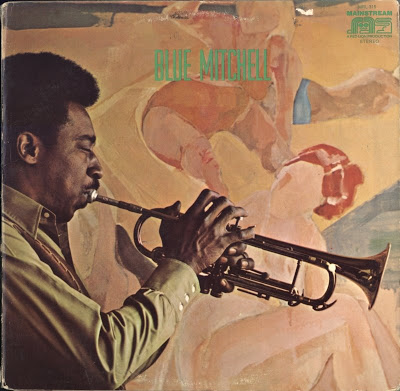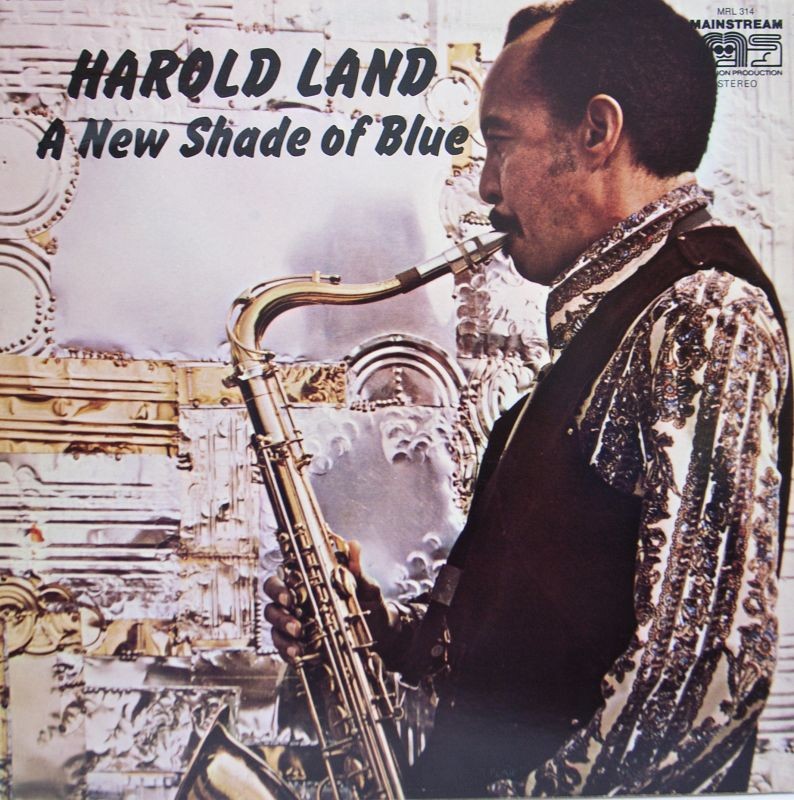In 1970 Blue Mitchell was a trumpeter in the Ray Charles Orchestra. Nothwithstanding the fact that playing with the man who was respected among musicians in the sixties for reminding them of the roots of jazz was a valuable experience, it was a decision primarily driven by financial needs. Who could blame him? Jazz life was (is) a scuffle. In the early to mid-seventies Mitchell would continue commercial endeavors, working with the father of British blues, John Mayall, while simultaneously record for the Mainstream label. Blue Mitchell (in popular language also known as Soul Village but not catalogued as such) is his debut on Mainstream. It’s one of the better releases in Mainstream’s book, as Mitchell keeps up the energy of his career-high Riverside and Blue Note recordings of the early and mid-sixties, while adapting adequately to early seventies production methods.
Personnel
Blue Mitchell (trumpet), Jimmy Forrest (tenor sax), Walter Bishop Jr. (piano, electric piano), Larry Gales (bass), Doug Sides (drums)
Recorded
March 1971 in NYC
Released
as MRL 315 in 1971
Track listing
Side A:
Soul Village
Blues For Thelma
Queen Bee
Side B:
Are You Real
Mi Hermano
The danceable quality of Blue Mitchell is immediately apparent. Three-fifth of the repertoire is reserved for tunes that are influenced by Carribean and West-Indian rhythm. Mi Hermano, Queen Bee and Benny Golson’s Are You Real are contagious songs with big-sounding two-horn themes, in which Mitchell displays his abundant style and round tone, employing a wide spectrum of notes. By concentrating on exotic styles, Mitchell emphasizes and stays true to the lineage of Carribean influence on jazz that took off through the innovations of the bebop clique of the fourties. Mitchell feels at home in these surroundings and had recorded these types of compositions before. Fungii Mama (from The Thing To Do) is a swinging and succesful case in point.
The order of soloing is the same on all five tunes: Mitchell first, then Forrest and Walter Bishop Jr. The styles of Mitchell and Forrest blend well with one another; they’re both very lively, yet Forrest’s style is rougher and drenched in swing, as Mitchell’s style is a fair mix of bop and blues. The entrance of veteran Jimmy Forrest in Mi Hermano, who, curiously, had to be pulled out of retirement for the job in Mitchell’s group, is a real kick in the gut. Soul Village and Blues For Thelma are dynamic hard bop compositions; tension-building figures in the former’s theme and a groovy, walking bass figure in the latter’s theme give these tunes an edge. They stimulate the soloists to express themselves eloquently.
Essentially, Blue Mitchell is a hard bop recording dressed up for a new age. The sound of drums, electric bass and, occasionally, electric piano, is early seventies, but thematically Blue Mitchell belongs to the era in which the trumpeter shone brightly on many a fine session. One must admit that the alternative title of Soul Village isn’t such a bad choice after all.



